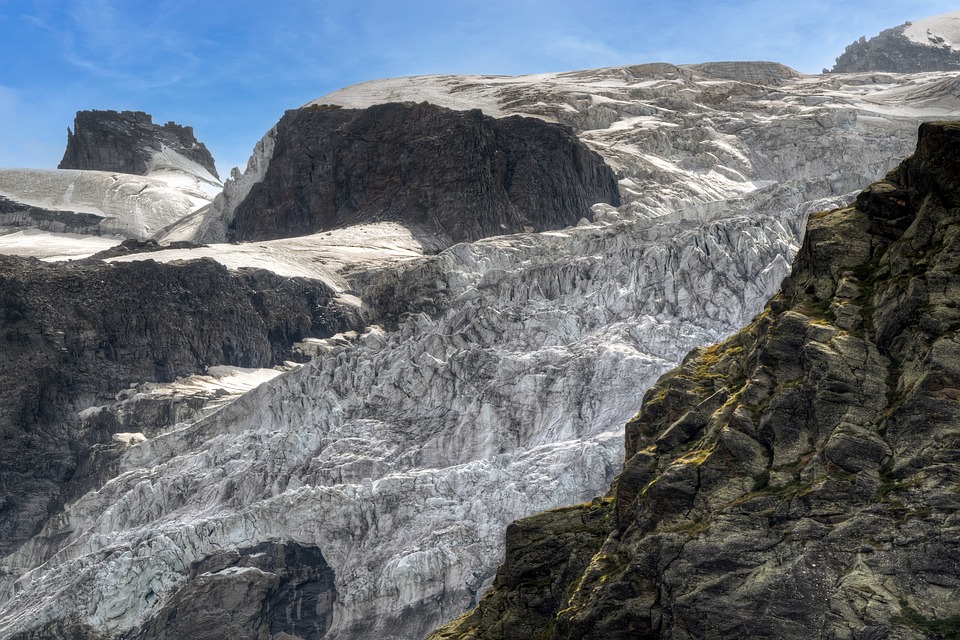Introduction
Global warming is a significant environmental issue that is affecting various aspects of the planet, including the hydrosphere. The hydrosphere refers to all the water on Earth’s surface, including oceans, lakes, rivers, groundwater, and even ice. As global temperatures continue to rise due to human activities, the hydrosphere is experiencing several adverse effects. This article explores the impact of global warming on the hydrosphere.
1. Melting Glaciers and Ice Sheets
One of the most visible consequences of global warming on the hydrosphere is the accelerated melting of glaciers and ice sheets. As temperatures rise, ice formations in polar regions and mountainous areas are rapidly disappearing, leading to a rise in sea levels. This increase in global sea levels poses a threat to coastal communities, as it can result in coastal erosion, flooding, and the loss of valuable habitats for marine life.
2. Ocean Acidification
Global warming also contributes to ocean acidification, which has a profound impact on the hydrosphere. As the Earth’s atmosphere absorbs more carbon dioxide (CO2) emitted from human activities, a significant portion of it is absorbed by the oceans. This excess CO2 reacts with seawater, reducing its pH level and making it more acidic. Acidic waters can have detrimental effects on marine organisms, such as coral reefs, shellfish, and other marine life that rely on calcium carbonate for their shells or skeletons. This disruption in the marine ecosystem can have cascading effects on the entire food chain.
3. Changes in Ocean Currents and Circulation
Global warming can also disrupt ocean currents and circulation patterns, which play a crucial role in regulating Earth’s climate. As the planet warms, the melting of ice in the polar regions causes an influx of freshwater into the oceans. This influx can affect the density and salinity of seawater, leading to changes in ocean currents. Alterations in ocean currents can disrupt the transportation of heat and nutrients, impacting marine ecosystems and weather patterns around the world.
4. Increased Frequency and Intensity of Extreme Weather Events
Global warming is associated with an increase in the frequency and intensity of extreme weather events, such as hurricanes, typhoons, and heavy rainfall. These events can have severe implications for the hydrosphere. Intense rainfall can lead to flooding, damaging infrastructure and causing water pollution from runoff. Hurricanes and typhoons can cause storm surges, which can inundate coastal areas and contaminate freshwater sources with saltwater. These extreme weather events can disrupt the balance of the hydrosphere, affecting both terrestrial and aquatic ecosystems.
Conclusion
Global warming is having a profound impact on the hydrosphere, with consequences that extend beyond just the water itself. The melting of glaciers and ice sheets, ocean acidification, changes in ocean currents, and increased frequency of extreme weather events are all significant effects of global warming on the hydrosphere. It is crucial for individuals, communities, and governments to take immediate action to mitigate the causes of global warming and work towards sustainable practices that protect the hydrosphere and its delicate balance.

Kyle Whyte is a notable scholar and professor at the University of Michigan, holding positions such as the George Willis Pack Professor in the School for Environment and Sustainability and Professor of Philosophy. Specializing in environmental justice, his work critically examines climate policy and Indigenous peoples’ ethics, emphasizing the nexus between cooperative scientific endeavors and Indigenous justice. As an enrolled Citizen Potawatomi Nation member, he brings a vital perspective to his roles as a U.S. Science Envoy and member of the White House Environmental Justice Advisory Council. His influential research is supported by various prestigious organizations including the National Science Foundation, and disseminated through publications in high-impact journals. Kyle actively contributes to global Indigenous research methodologies and education, with affiliations to numerous institutes and societies dedicated to traditional knowledge and sustainability. Recognized for his academic and community engagement, Kyle has earned multiple awards and served in various visiting professorships. His efforts extend to leadership positions on boards and committees focused on environmental justice nationwide.
